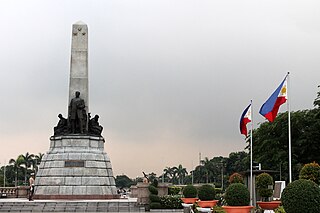See also
| Wikimedia Commons has media related to Cultural heritage monuments in Caraga . |
This list contains an overview of the government recognized Cultural Properties of the Philippines in Caraga. The list is based on the official lists provided by the National Commission on Culture and the Arts, National Historical Commission of the Philippines and the National Museum of the Philippines.
No Cultural Properties recognized by the government are known at this point.
| Wikimedia Commons has media related to Cultural heritage monuments in Caraga . |

The National Commission for Culture and the Arts of the Philippines is the official government agency for culture in the Philippines. It is the overall policy making body, coordinating, and grants giving agency for the preservation, development and promotion of Philippine arts and culture; an executing agency for the policies it formulates; and task to administering the National Endowment Fund for Culture and the Arts (NEFCA) – fund exclusively for the implementation of culture and arts programs and projects.

The National Museum of the Philippines is an umbrella government organization that oversees a number of national museums in the Philippines including ethnographic, anthropological, archaeological and visual arts collections. Since 1998, the National Museum has been the regulatory and enforcement agency of the Government of the Philippines in the restoring and safeguarding of important cultural properties, sites, and reservations throughout the Philippines.

The Philippine Registry of Cultural Property, abbreviated as PRECUP is a national registry of the Philippine Government used to consolidate in one record all cultural property that are deemed important to the cultural heritage, tangible and intangible, of the Philippines. On June 11, 2018, the entries in the newly updated PRECUP was at 3,921. Additionally, 1,259 out of 1,715 LGUs, or 73 percent of LGUs have established local cultural inventories (LCI).

The National Cultural Heritage Act, officially designated as Republic Act No. 10066, is a Philippine law that created the Philippine Registry of Cultural Property (PRECUP) and took other steps to preserve historic buildings that are over 50 years old. It was signed into law on March 25, 2009.

These lists contain an overview of the government recognized cultural properties in the Philippines. The lists are based on the official lists provided by the National Commission for Culture and the Arts, National Historical Commission of the Philippines, and the National Museum of the Philippines.